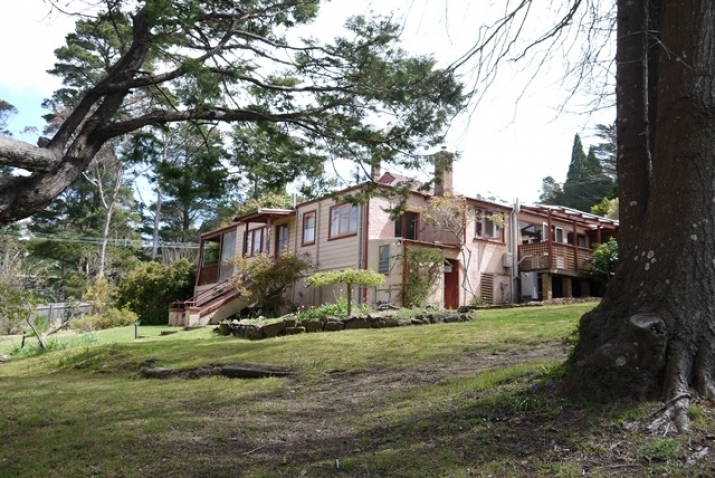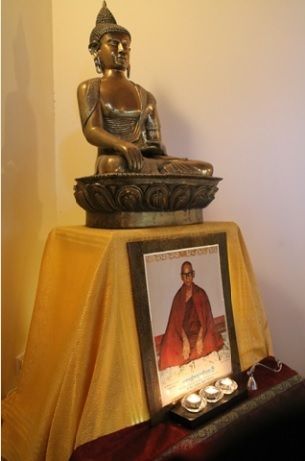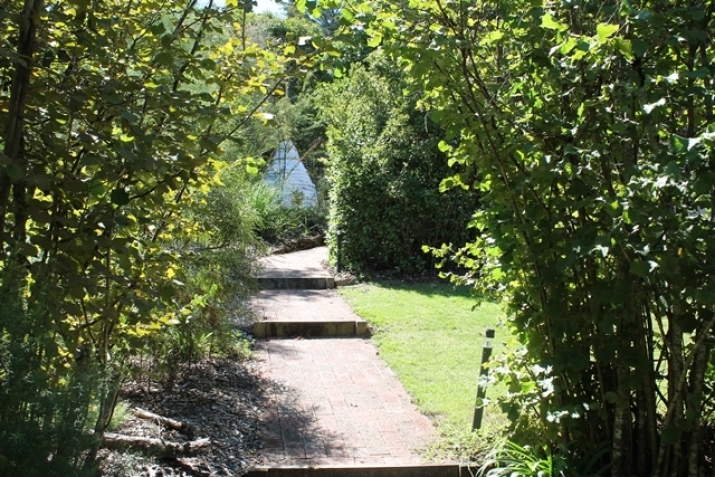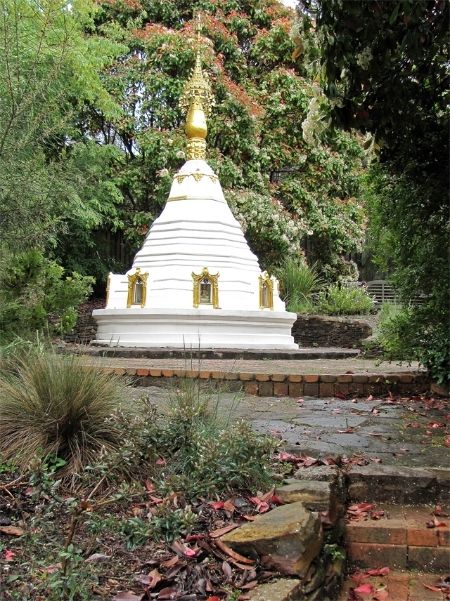FEATURES|VEHICLES|Theravada
The Blue Mountains Insight Meditation Centre: Forging an “Australian Buddhism” near Sydney
 Sasana House, containing the dining room, kitchen, office, and teachers' and staff areas. From bmimc.org.au.jpg
Sasana House, containing the dining room, kitchen, office, and teachers' and staff areas. From bmimc.org.au.jpgThe Blue Mountains Insight Meditation Centre (BMIMC) is a Theravada Buddhist retreat center located in the small village of Medlow Bath in the upper Blue Mountains, a two-hour drive from Sydney, in Australia. It offers residential meditation retreats of various lengths, most commonly on weekends or of 9–10 days duration, for up to 18 people. Several month-long retreats are also conducted during the year.
The BMIMC has its beginnings in the early 1980s when several Australians, having spent time in Asia practicing Buddhist meditation predominantly in the Burmese tradition, returned home and began to invite experienced lay teachers from the US to conduct satipatthana vipassana retreats in the tradition of the late Mahasi Sayadaw (1904–82) of Burma. In 1985, Sayadaw U Pandita, one of the world's foremost teachers of this tradition in Burma and a successor to Mahasi Sayadaw, came to Australia to teach a one-month retreat. This and all the previous retreats were held in rented facilities.
After the first retreat with Sayadaw U Pandita, there was a burgeoning demand for opportunities to practice in the Mahasi vipassana style in Australia, so further retreats were organized, taught by Sayadaw and other renowned Burmese monastics, as well as by international lay teachers. Several Australian meditators also began to lead retreats during this time. As it became more difficult to rent suitable and affordable retreat facilities, there was a growing interest in acquiring and establishing a dedicated center. Following a few short-term situations, the property at Medlow Bath was made available with the support of two members of the local practice community.
The BMIMC has expanded over the years, with facilities being upgraded and developed as resources became available. This is due to the dedication and generous support of many people, including a significant contribution by the Sydney Burmese community, who are involved with the center, so that it now provides a peaceful and comfortable retreat space and a year-round schedule of retreats. Although vipassana meditation is the BMIMC’s primary and most significant activity, its link to Burma and committee members’ relationships with the Sydney Burmese community have also resulted in involvement with two social projects in Burma—the financial support of undergraduate medical students and the support and promotion of a monastic orphanage.
The BMIMC was until recently unique in Australia as being specifically dedicated to the teaching and practice of satipatthana vipassana in the Mahasi tradition (there is now another center run by a Western monastic being developed in northern New South Wales). It is the only center being run by a committee of Western lay Australian meditators who have an affiliation with one specific Burmese Theravada Buddhist tradition. Yet, while inspiration, respect, and reverence for the Burmese tradition and its senior monastic teachers have always been at the heart of the center’s existence and continue to be integral to it, a natural evolution has taken place as Australian meditators gain more experience and confidence in the meditation practice and related Buddhist teachings.
This development has paralleled the narrative circulating in Western Buddhist communities generally of the idea of a “Western Buddhism.” Initially at the BMIMC, there was no clearly articulated intention to develop an "Australian Buddhism”; today, this is a directly stated aim. Local culture, attitudes, and behavior have naturally and organically had an effect on the center’s operation and culture of practice.

The meditation teaching at the BMIMC is rooted
in the tradition of the late Mahasi Sayadaw.
From bmimc.org.au
The Mahasi tradition of satipatthana vipassana as taught by the Burmese monastics in its pure form has three main aspects—a formal sitting practice, a formal walking practice, and a refined, mindful observation of all other activities throughout the day. For lay practitioners, the Eight Precepts are observed during retreats to provide an ethical foundation and support for the meditative mind training, including the Seventh Precept of abstaining from eating after midday. It is usual for the day to begin at 4 a.m. and continue until 10 p.m., comprising alternate one-hour periods of sitting and walking meditation, interspersed only by the meal breaks and a Dhamma talk in the early evening. Noble silence is also observed, meaning that both verbal and non-verbal communication is restricted; conversation is limited to regular interviews with the teacher, an integral part of a retreat, and brief discussions with support staff regarding any practical needs that arise.
However, different and more relaxed formats are now offered by a number of lay teachers at the BMIMC, both Australian and international, and can include a less demanding schedule—a shorter day of practice and/or shorter practice periods; individual freedom to structure one’s daily practice; an evening meal; group discussions or periods of talking; poetry readings during a Dhamma talk; and some group exercise or physical activity, such as stretching or a nature walk.
As well as these modifications to the more traditional retreat format, the life of a Burmese monastic, and particularly the senior monks who have been in robes since childhood, could not be more different to that of a Westerner. Just as those monks bring a lifetime of disciplined monastic study and training to their teaching style on a retreat, Western teachers bring their individual personalities, cultural conditioning, and life experiences into the retreat environment. These color and influence the experience of the retreatants.
 Path linking the meditation hall with Sasana House. From bmimc.org.au
Path linking the meditation hall with Sasana House. From bmimc.org.auWhat effect these changes will have on the evolution of the Dhamma at the BMIMC and in Australia is perhaps impossible, or at least difficult, to foresee. But like the spread of the Dhamma throughout the Asian world and its adaptation to those cultures, the Dhamma is adapting to and developing in the cultures of the West. We, the Western practitioners of the Dhamma, are both transformed by it and the agents of its change.
For more information about the BMIMC, see the Blue Mountains Insight Meditation Centre website.
Tara Frances is a co-founder of and was a major sponsor in the establishment of the BMIMC. She has practiced vipassana meditation for 30 years in Burma, Nepal, and Australia, with Sayadaw U Pandita and other senior teachers. Tara was a member of the BMIMC management committee from the center’s inception up to her six-year term as resident manager, which ended in November 2010.















